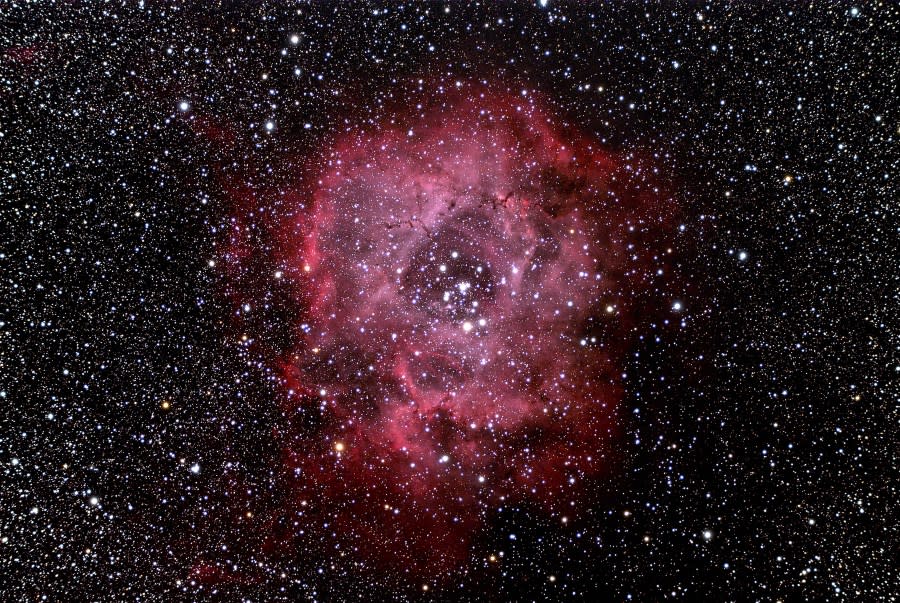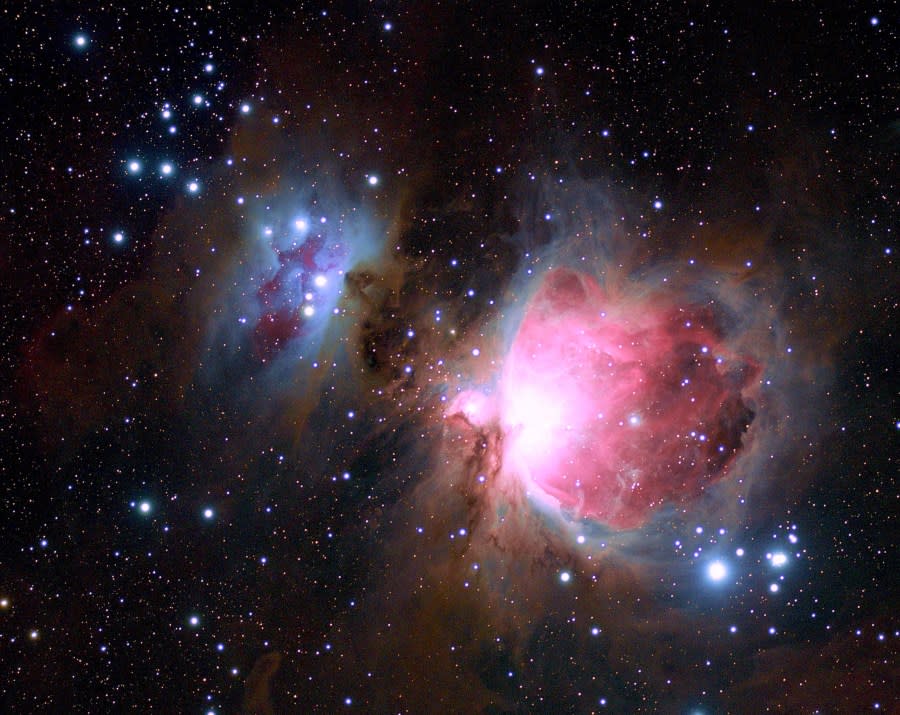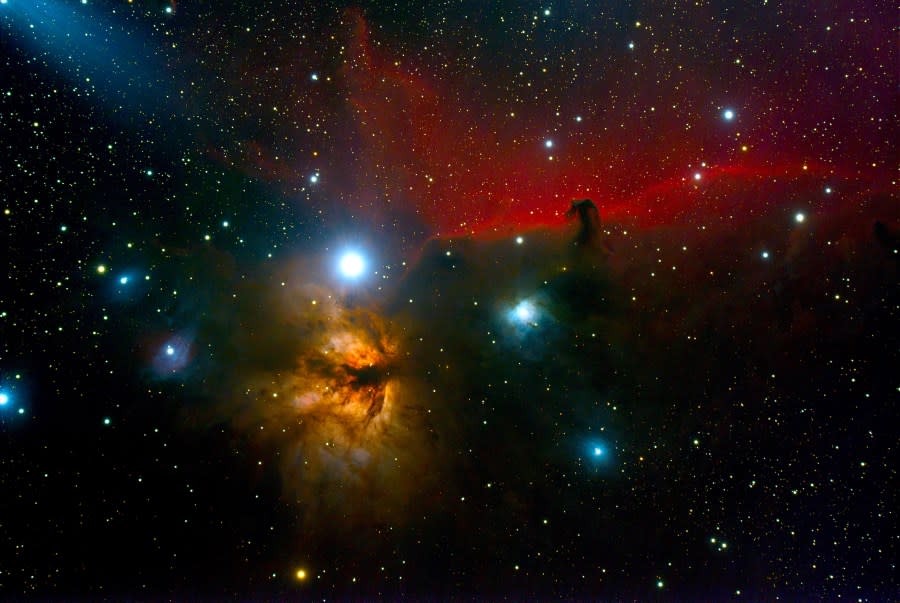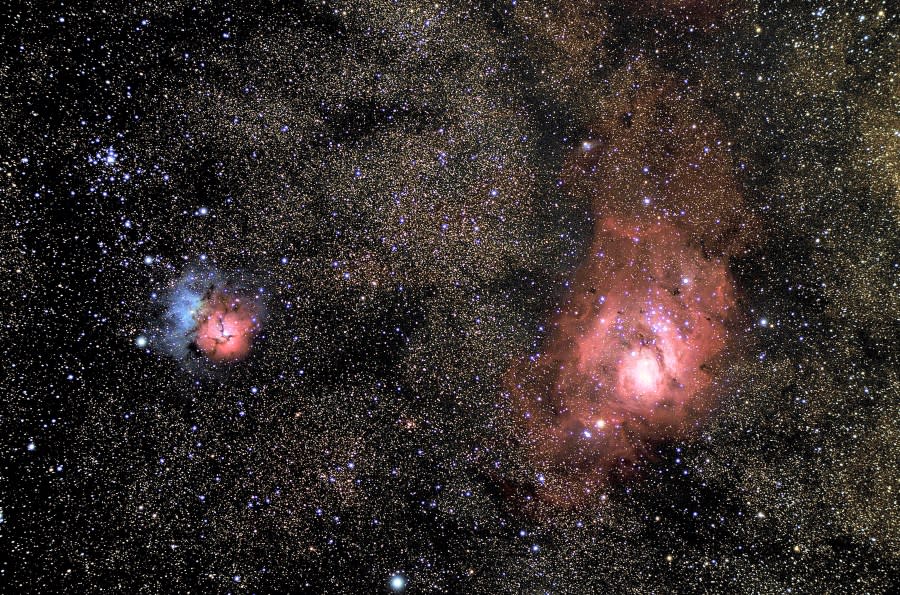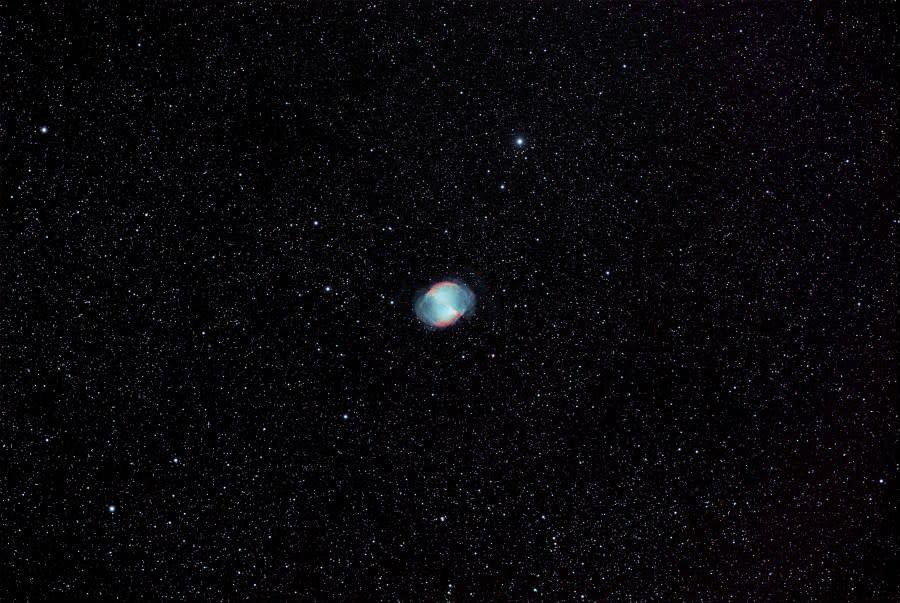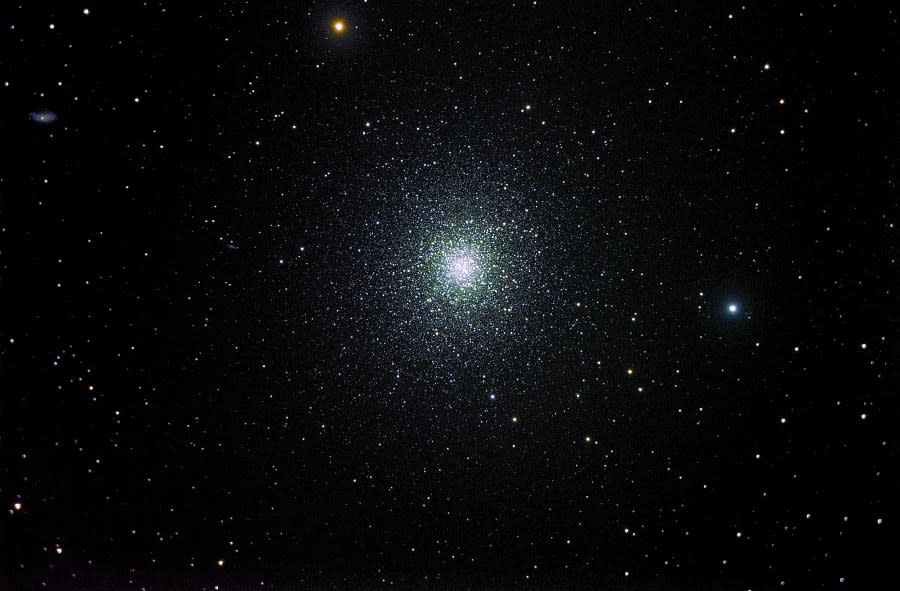Telescope camera captures awing images of nebulas thousands of light-years away

SAN DIEGO (FOX 5/ KUSI) — A physics and astronomy professor staked out in the dark at Anza-Borrego Desert State Park to capture the cosmos.
Herbert W. Hamber from the University of California, Irvine told FOX that he heads to the barren wilderness of San Diego County’s northeast desert to photograph galaxies far, far away. He posts up overnight at the Steele/Burnand Anza-Borrego Desert Research Center (SBABDRC).
“I usually visit the SBABDRC during the middle of the month, when there’s no moon. The moon can be bright enough in other periods, so as to make it nearly impossible to get decent images of faint objects such as nebulas and galaxies,” Hamber explained.
9 experiences in San Diego that are a must, according to National Geographic
According to the professor, Borrego Springs and the surrounding area is a great place to capture these images because light pollution is minimal. He said this makes faint objects a lot more visible and provides good image contrast.
“There’s some residual light pollution low facing west in the direction of Escondido and north towards Palm Springs,” Hamber continued. “Going further out in the desert would be even better, but nevertheless quite challenging due to a lack of basic infrastructure — power, wifi, water, beds etc. My observation times usually last four to five nights in a row, weather and clouds permitting.”
The equipment
In order to capture these photos, Hamber used the following four telescopes:
— SVbony 80mm aperture (450mm focal length) f/7 ED refractor
— SVbony 122mm aperture (680mm focal length) f/7 triplet APO refractor
— Celestron 8-inch (200mm aperture, 1250mm focal length) f/6.3 Schmidt-Cassegrain (SCT) refractor
— iOptron 8-inch (200mm aperture, 1620mm focal length) f/8 Ritchey-Chretien (RC) reflector with twin hyperbolic mirrors (same optical design as the Hubble Space Telescope)
WATCH: Glowing sand spotted at this San Diego beach
“The telescopes differ quite a bit in the size of the region they can explore. The smaller 80ED one is good for looking at objects that are around 2-3 degrees in size. The larger 8-inch RC one can go down to smaller 0.5 degree objects,” Hamber explained.
All of the telescopes are mounted on computerized GoTo mounts, which allow very accurate tracking of celestial objects like planets and galaxies over many hours.
“I usually run two telescopes with two mounts concurrently, so as to explore different regions of the sky,” said the professor.
The telescopes are connected at the back with a dedicated astro camera. Hamber used two Risincam cameras that incorporate the Sony IMX571 26 Megapixel sensor, which he said is “one of the best sensors on the market for backyard astronomy.”
The photo process
The camera attached to the telescope is connected to a laptop via a usb3.0 high speed data cable. A program on the laptop allows Hamber to look at the images as they come in, and adjust gain, focus and framing as well as many other parameters.
“WiFi access at the center allows me to upload the first images that come in to a NASA database (astrometry.net) and have it analyzed there to see if I am in the right region of the sky. The process involved is called by astronomers plate solving. All incoming pictures are stored on the laptop in a format used by astronomers called .fits (similar to .raw),” he explained.
The images are acquired by first taking a sequence of short exposures, typically between 10 seconds and 30 seconds. Many of these individual pictures (called subs) are taken over a period ranging from a few minutes to as much as five hours or more a night — weather and clouds permitting.
San Diego woman competing on Season 46 of ‘Survivor’
From there, the individual short exposures are combined — or “stacked” — by a free computer program called Deep Sky Stacker into a single image. This image is later cleaned up, cropped, color adjusted/white balanced and cropped in another free program called Gnu Image Manipulation Program.
The captures
Hambert captured several nebulas, galaxies, and even a globular cluster. Here’s a look at his photos with some added insight:
Rosette Nebula NGC 2244 in the constellation Monoceros
As explained by the astronomer, the Rosette Nebula is a bright Hydrogen emission nebula in the constellation Monoceros, with a tight cluster of stars at the center. The nebula’s color is mostly reddish from the vibrant ionized Hydrogen emission.
Orion Nebula M42 in the constellation Orion
“M42 is a very large, bright and visible emission nebula in the constellation Orion, and often
a favorite subject for backyard astronomers,” said Hambert. “It is located only ~1344 light-years away, within our own Milky Way galaxy.”
Horsehead Nebula IC 443 in the constellation Orion
IC443 is a large Hydrogen emission cloud in Orion, close to the bright triple star Alnitak, which Hambert said can be seen on the left. Extensive areas of dust around the deep red Hydrogen clouds create a nice sharp contrast over the Hydrogen red. The bright yellow Flame Nebula NGC 2024 can be seen on the lower left.
California lawmakers introduce bill to award Congressional Gold Medal to Muhammad Ali
Lagoon and Trifid Nebulas M8 and M20 in the constellation Sagittarius
These are about 4000 light-years away. He explained that large emission nebulas have the red colors given mostly by ionized Hydrogen and the green/blue tones from ionized Oxygen. Embedded within the nebulas are large clusters of bright stars.
Whirlpool galaxy M51a in the constellation Canes Venatici
“What can be seen in the picture (below) is actually two galaxies colliding with each other, a large one in the front and a smaller one passing behind it,” the professor explained. “The larger M51a in the front is a large spiral galaxy about 31 million light years away and containing around 100 billion stars.”
Dumbell Nebula M27 in the constellation Vulpecula
M27 is what is described as a planetary nebula, where an expanding gas cloud are illuminated by a bright white dwarf star situated at the center. It is located at a distance of about 1,360 light-years from Earth.
Great Globular Cluster M13 in the constellation Hercules
Hambert explained that M13 is a large globular cluster located about 22k light-years from Earth, containing around 300k stars with an estimated age of 11.65 billion years. “Thus significantly less, but still quite comparable to the age of the Universe, making it very old,” he said. If you look closely, two faint galaxies are visible towards the top left.
It’s safe to say, these images are “far out.”
For the latest news, weather, sports, and streaming video, head to FOX 5 San Diego & KUSI News.

